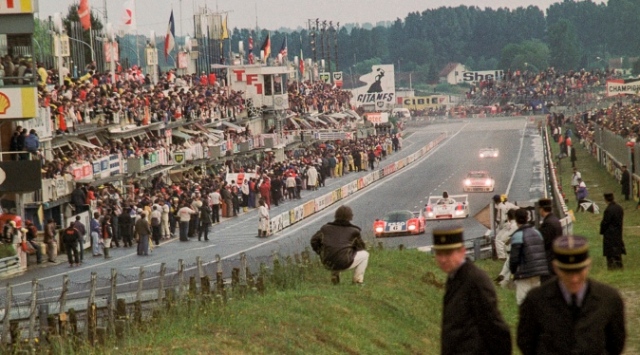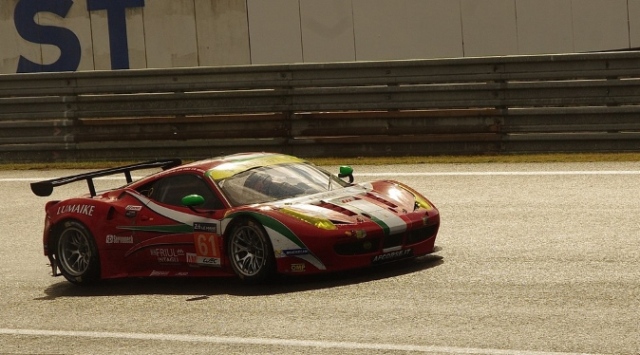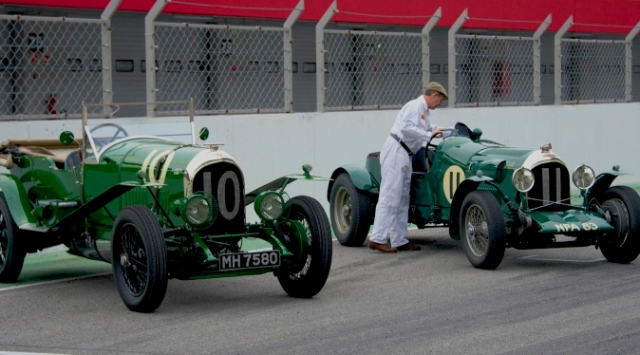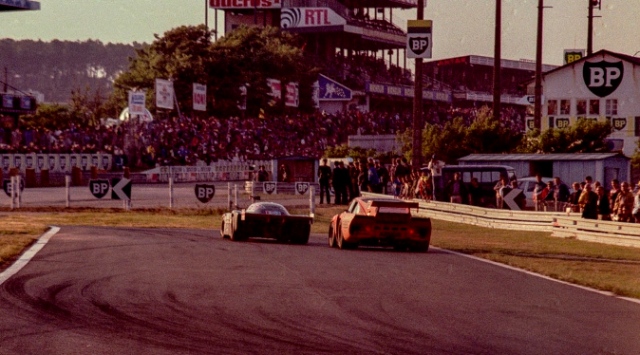While the French are blissfully wedded to world-class cooking and devoted to fine wine, the nation’s long love affair with fast cars is hardly a well-kept secret. A highlight of France’s jam-packed racing roster is 24 Hours of Le Mans: the world’s oldest endurance race. Here, we present the ultimate guide for those who want to discover the thrills of this full-throttle spectacular.
What is 24 Hours of Le Mans?

The 24 Hours of Le Mans historical racing event has taken place pretty much every year since 1923, just outside Le Mans, a beautiful French village in the Pays de la Loire region. While Formula 1 is focused on distance, this race tests the stamina of both driver and vehicle. The 8.5 mile track, which is comprised of permanent track and public roads that are provisionally closed for the race, is named the Circuit de la Sarthe, after the river region that Le Mans lies within. Once the chequered flag is waved, the car to travel the greatest distance in the 24-hour time period is crowned the winner.
When does the 24 Hours of Le Mans take place?

The race traditionally takes place in June on the weekend of the summer solstice (the longest night of the year) to maximise daylight time for the drivers. The 88th installment of 24 Hours of Le Mans will begin on 13th June 2020, where competing cars will line up along the grandstand for the hailing of the green flag signalling the start of the contest at 3pm. Adrenaline will peak the next day, when spectators will gather at the grandstand for the 3pm finish, when the winner is revealed.
What’s the best way to get to 24 Hours of Le Mans?

Petrol heads tend to drive into Le Mans for the 24 hour endurance race. The easiest way is to take a P&O ferry from Dover to Calais before driving the 4 hours 30 minutes to the Circuit De La Sarthe. Alternatively, you can take a P&O ferry from Hull to Zeebrugge on the coast of Belgium, and drive around 6 hours to the track. If you are using a Sat Nav, remember that French postcodes relate to areas rather than a particular address. You might be better off to input the GPS co-ordinates of the main circuit entrance: North 47.95627; East 0.20743. Also, be sure to take a good map with you and euros for the toll roads.
What can I expect from 24 Hours of Le Mans?

Renowned for its unique atmosphere, 24 Hours of Le Mans can become a bit of a blur as spectators try to stay awake for an entire day of continuous excitement, glamour and partying. While the race itself is the obvious highlight, the week leading up to the event is packed with unmissable entertainment. There are plenty of opportunities to get up close to cars and drivers in photograph and autograph sessions, as well as the Great Drivers Parade and carnival. In addition to this, a visit to the 24 Hours of Le Mans Museum is a must. The exhibition is home to hundreds of cars that capture the history of the race, including iconic Bentley, Ferrari and Porsche models.
Are there any notable winners?

Many different manufacturers have won 24 Hours of Le Mans. The most successful marque in history is Porsche, which has taken 19 victories in the history of the race followed by Audi. The German manufacturer has dominated the event in recent years, winning 13 times since 2000. Two drivers stand apart for their number of triumphs: Belgian legend Jacky Ickx who had six victories between 1969 and 1982, earning him an honorary citizenship to the town of Le Mans, while Danish driver Tom Kristensen has since scooped the record with nine wins, earning him the nickname ‘Mr Le Mans’. This may also be a good time to mention that, amusingly, it was this race that started the tradition of the winning driver celebrating by spraying champagne instead of drinking it!
Where should I stay in Le Mans?

The most popular way to experience the Le Mans 24 Hours is to camp at the circuit. Public campsites such as Houx and Maison Blanche have space for thousands and are just a short walk to the race. Refined visitors can also take up the event’s glamping and private trackside camping opportunities. If you decide to go last minute, you may find accommodation nearby is limited, but take a leisurely 45-minute drive south of Le Mans and you’ll find yourself in the heart of the beautiful Châteaux country, where there are hotels aplenty to suit every budget. Alternatively, you can make like the many die-hard fans who choose to sleep trackside or in the car on the Saturday night.
If this has inspired you to travel to France for 24 Hours in Le Mans, take a look at our Dover to Calais or Hull to Zeebrugge crossings today.
Featured image by David Merrett.



